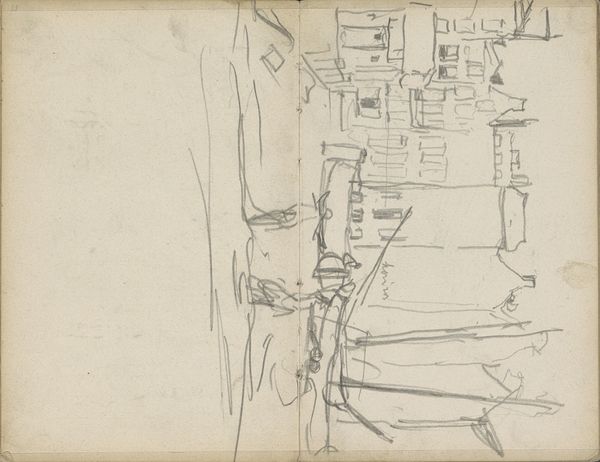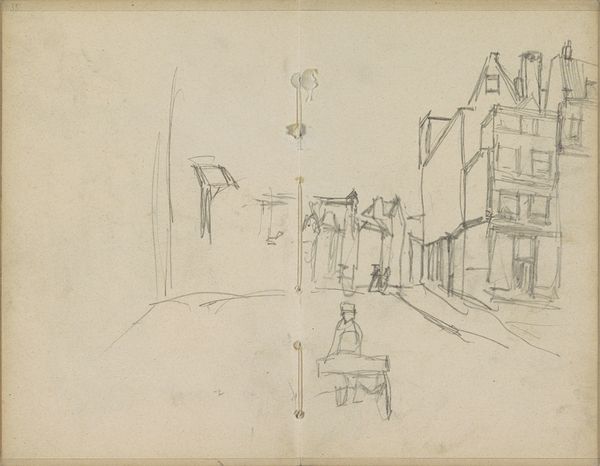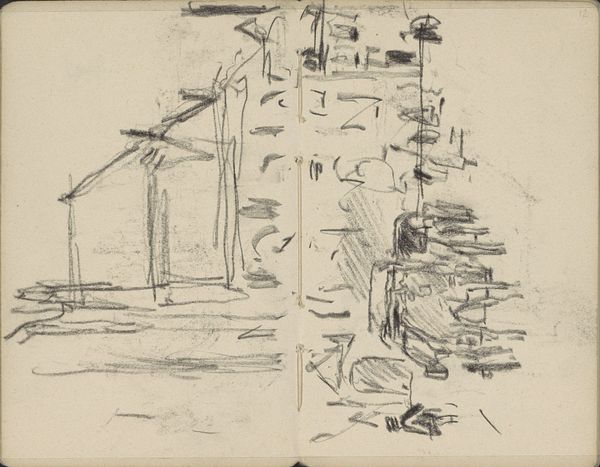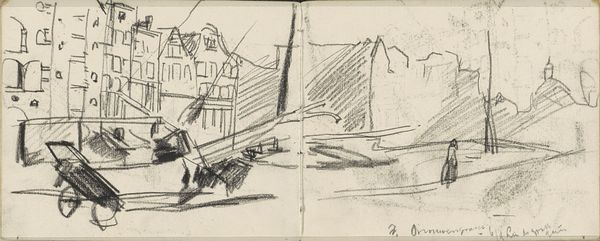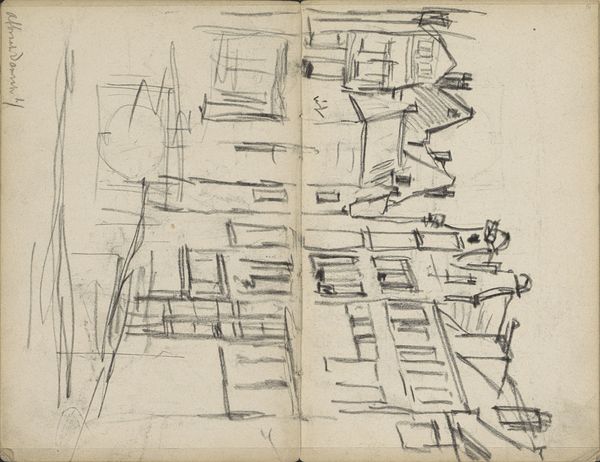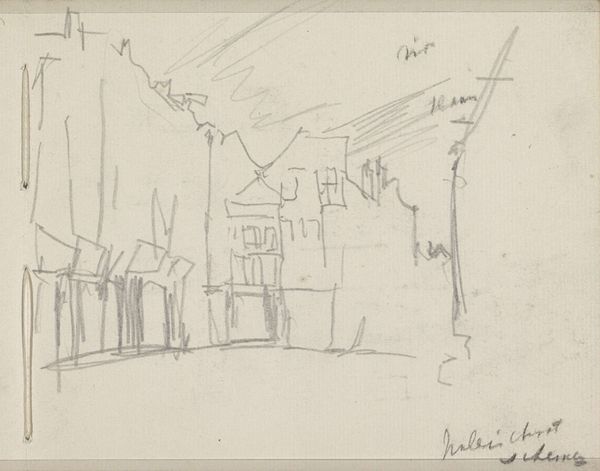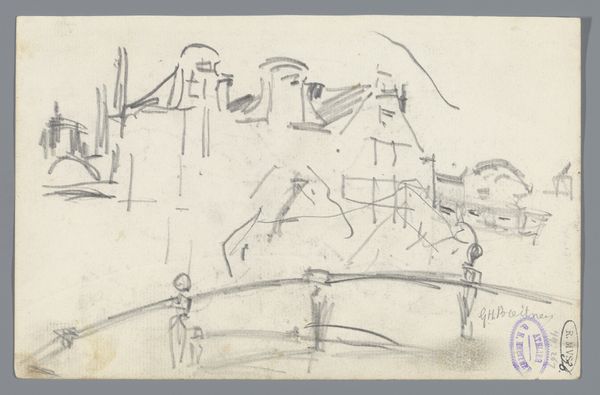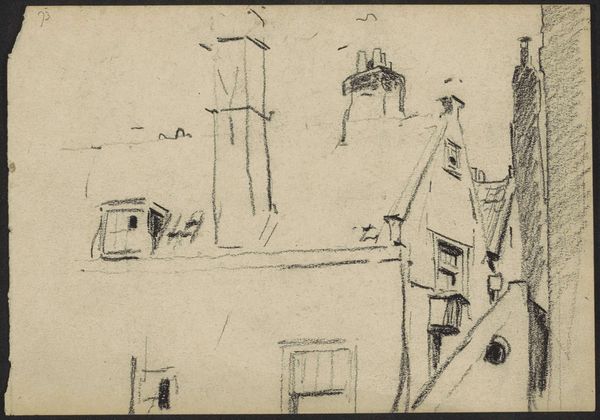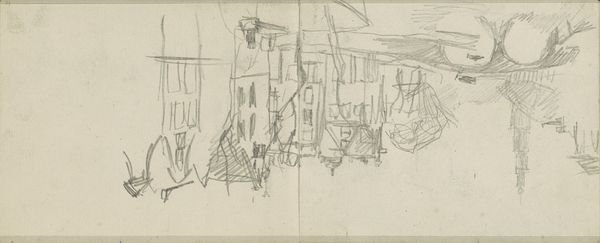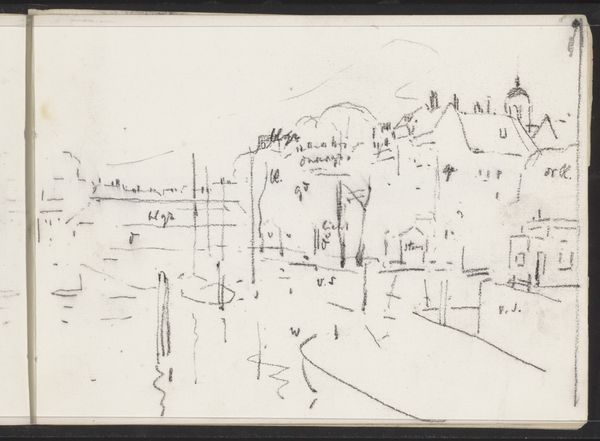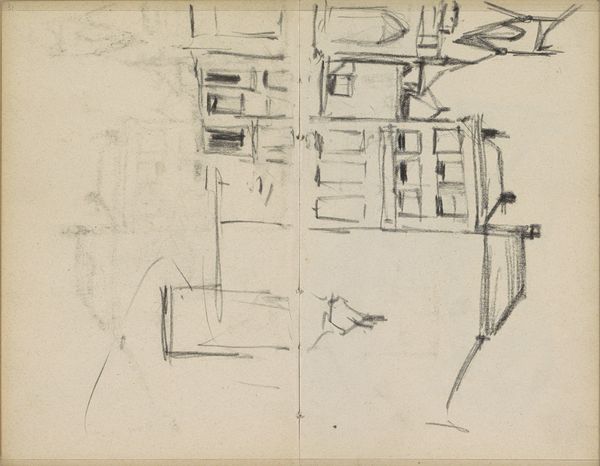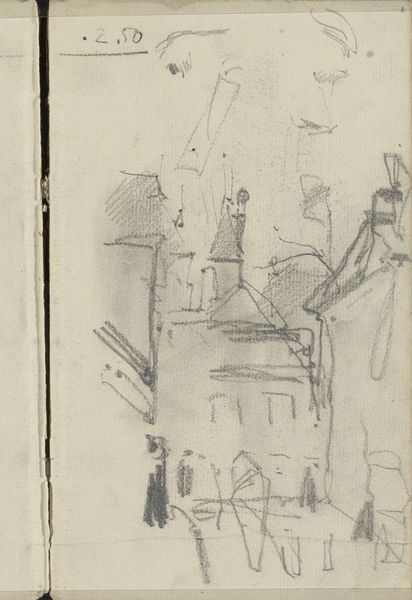
Beurs van Zocher op de Dam te Amsterdam, gezien naar de ingang van het Damrak Possibly 1883 - 1886
0:00
0:00
georgehendrikbreitner
Rijksmuseum
drawing, paper, pencil
#
drawing
#
impressionism
#
landscape
#
paper
#
pencil
#
cityscape
Copyright: Rijks Museum: Open Domain
Curator: Breitner's "Beurs van Zocher op de Dam te Amsterdam, gezien naar de ingang van het Damrak," possibly sketched between 1883 and 1886, offers a fascinating glimpse into the cityscape through the artist’s eyes. It’s currently held in the Rijksmuseum collection. Editor: My immediate impression is a sense of immediacy. The pencil strokes feel incredibly light, capturing the bustling city center with remarkable speed. Almost like a memory being sketched. Curator: It does. Breitner, deeply embedded in the Amsterdam art scene, was very much focused on the zeitgeist of urban life. This drawing reflects the evolving social landscape. Editor: I find myself drawn to the rather fragmented appearance of figures in the sketch on the right side, those dynamic strokes suggesting a fleeting movement or perhaps even struggle and anxiety amidst the wealth in this city, like shadow selves moving in tandem. Curator: Interesting interpretation. Breitner, like many Impressionists, was grappling with how to represent modern life and also with the role of commercialization. The Bourse itself represented emerging capitalism, the fluctuations of economies, so the figures you're noting could represent people enmeshed within those forces. Editor: The building on the left is solid and anchored in a classical rendering of architecture. Yet these other ephemeral scribbles pull the eye across the drawing. Perhaps they remind us that even structures built on grand ideologies or capital do not have the power or capability of solidifying life. Curator: Indeed, this intersection is pivotal to understanding Breitner's intent. This part of the Dam Square and specifically Zocher's stock exchange building carried considerable public significance, having been torn down soon after in 1903, it represented the evolving economic ambitions and social values. The work memorializes a particular historical period and that building’s symbolic meaning. Editor: Well, the contrast is certainly compelling. It makes one question what the foundations are under systems of progress and commerce. The fleeting sketch leaves us pondering whether those structures are more fragile than we believe. Curator: Exactly, and that’s the enduring quality. It urges viewers to delve deeper into understanding the visual signs reflecting the cultural anxieties of that time. Editor: I’m leaving this conversation thinking about how much history can be packed into a few fleeting lines on paper. Curator: Agreed. Breitner's sketch isn't just a drawing; it’s an intriguing marker of societal evolution and the very spirit of a city undergoing change.
Comments
No comments
Be the first to comment and join the conversation on the ultimate creative platform.
